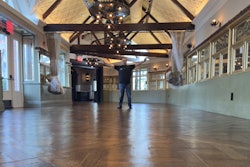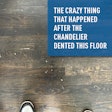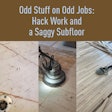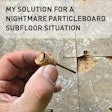Wayne, I will have a go at the crawl space issue. The critical thing about any crawl space or basement is its effect on the moisture content (MC) of the subfloor. Over time, high RH in the crawl space will eventually raise the MC of the subfloor. The most accurate measurement of the recent effect of RH on the crawl space (or basement) is the MC of the exposed joists and subfloor. Let's look at Table 4-2 "Moisture content of wood in equilibrium with stated temperature and relative humidity" from the 2009 update of the Wood Handbook (it is also in NWFA's "Water and Wood"), which gives us the relationship between temperature (T), relative humidity (RH), and MC. You need to realize that the gain or loss of moisture due to RH is NOT instantaneous. The lower the temperature and velocity of the air, the slower the effect of RH. Lumber is dried at high temperatures with lots of fans constantly moving the hot, dry air across the surfaces of the carefully stacked boards, and it takes between eight and 14 days to kiln-dry thoroughly air-dried hardwood lumber. Soooo… it will take a number of weeks for moisture to be gained or lost at normal interior temperature levels around 70 degrees F. Maybe even longer with the stagnant air in a crawl space or basement.
How do you keep track of the RH in the crawl space or basement? By using a data logger that records the temperature and RH at regular intervals. But RH readings can be misleading in that opening up the building to the outdoors will within minutes make the inside of the building the same as the exterior. If you are not constantly monitoring temperature and RH with a data logger, you would miss all of the ups and downs. Using a pin meter with insulated electrodes can provide the MC profile of wood subfloors, studs and joists. By comparing the MC at the surface to the MC equivalent of the current RH, you can see if the air is drying the building or not. By comparing MC at the surface with the interior of the subfloor, you can also determine if there is big trouble lurking below.
Temperature and RH are useful and interesting, BUT MC of building components is critical. You would not drive your vehicle without a properly functioning speedometer and without scraping the frost off the windshield. If your installers are not constantly using a properly functioning pin-type moisture meter you are working on a tightrope wearing a blindfold. Go into the crawl space or basement and measure the MC of the wood joists and subfloor from the underside, pretty please with sugar on it.

































